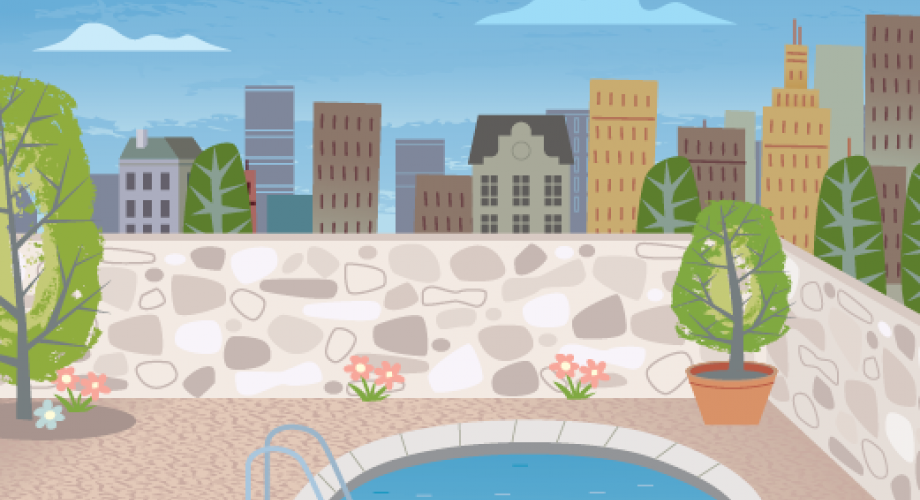Q: What is a cost-effective way to clean concrete driveways, sidewalks and pool areas?
A: There are a few things you can do to help clean up the concrete. Oil stains can be spot treated with cat or absorbent litter. Spread the cat litter over the oil stains and grind the litter into the stains with your shoes. Leave it for 24 hours and sweep up after. Chewing gum can be removed by chilling the gum with ice or CO2 spray and using a putting knife to lift and scrape the gum off of the concrete. Use detergent and a stiff brush to remove the gum stain. Organic matter stains can be removed with power washer spray. Use a power washer if you have a large area of concrete to clean. Set the power washer to 3,000 PSI and use the wide spray head. Be careful not to gouge the concrete with the spray; keep the hand wand moving. Softer material like brick will need less PSI or greater distance between the spray head and the bricks.
Q: While I have given my residents information on how to prepare a personal emergency preparedness kit for their families, does my apartment building need an emergency preparedness kit? If so, what should be in it?
A: A quick list of what should be in your family disaster preparedness kit includes at a minimum: Flashlight with batteries, canned goods, a gallon of water per person, a knife, medicine and blankets.
Now this works OK for a family but may not be appropriate for an apartment building. The residents may very well shelter in place during a disaster and be fine. What may be in danger is your property! Start with a bit of preventive disaster maintenance:
- Locate the main water shut-off valve and any minor shut-off valves. Make sure the valves are in working order. If they are gate valves, it might be time to upgrade them to ball valves. Old gate valves are notorious for breaking valve stems at the moment you need them to work.
- Locate and clearly mark the main electrical panel.
- Locate and mark the main sewer clean-out. Run a mainline snake or hydro jet at least once a year. (A Friday evening main back-up is a disaster.)
- Locate and mark the main gas or fuel oil shut-off valve.
- Write down and post this information in a public area of your apartment building, including emergency phone numbers and how to get hold of management. Alternatively, post this information on the inside of a kitchen cabinet door in each apartment.
Q: I want to create a seating and relaxing area in the middle of my building’s courtyard. My thoughts are to use decomposed granite and eliminate the current grass area. How do I go about installing the surface without making a mess or a future headache for myself?
A: Decomposed granite, or “DG” for short, is a great way to add a durable, natural and water-wise surface. A few things you need to know before you get started. The key word in DG is “decomposed.” In other words, this granite is decomposing. There are three options: Raw DG for flower beds, stabilized DG for walkways and resin-coated DG for driveways. For your purpose, you need to use a stabilized DG for walkways. It has a binder mixed into the DG. Non-stabilized DG is much cheaper, but will of course decompose, create dust when dry and slush when wet. To properly install DG, dig down three inches overall and use a wood, rock or brick border to keep the edges of the DG from crumbling. As an option, lay down a weed barrier cloth under the DG. Apply DG in one and a half inch layers, water down (don’t flood) and tamp or use a heavy roller to compress the DG. Wait eight hours between layers to let the DG settle. Repeat the process for each subsequent layer. When properly installed, the DG surface will be rock hard, stable, dust-free and will allow water to drain.
Do you have DIY maintenance questions? Send them to [email protected]
